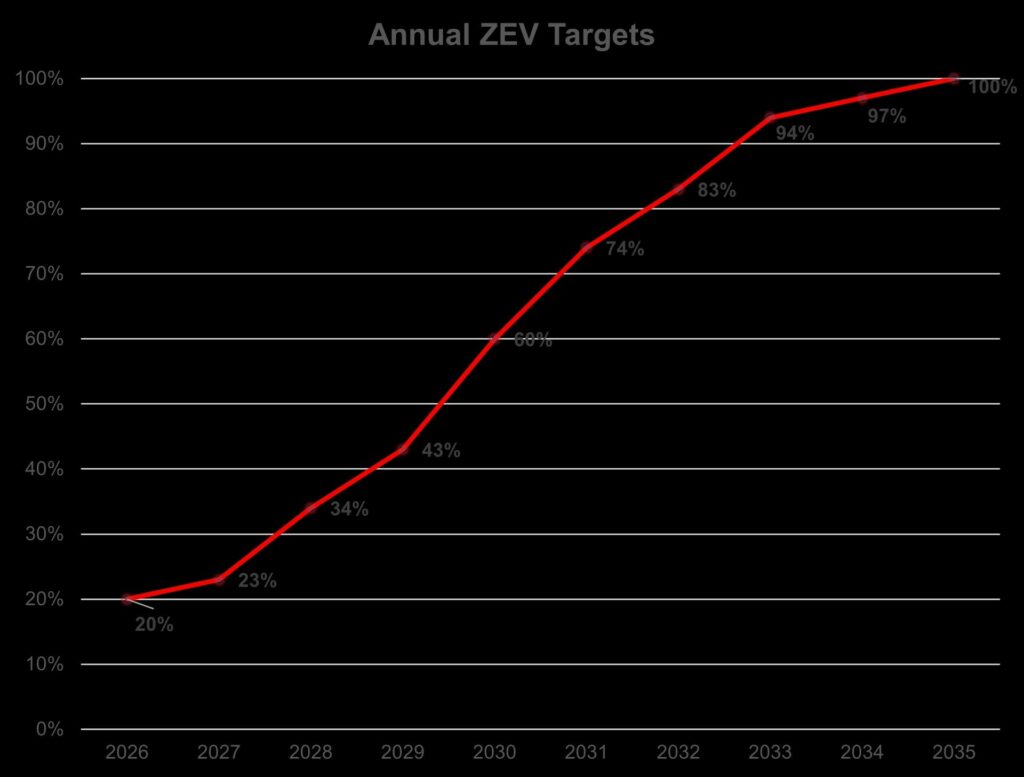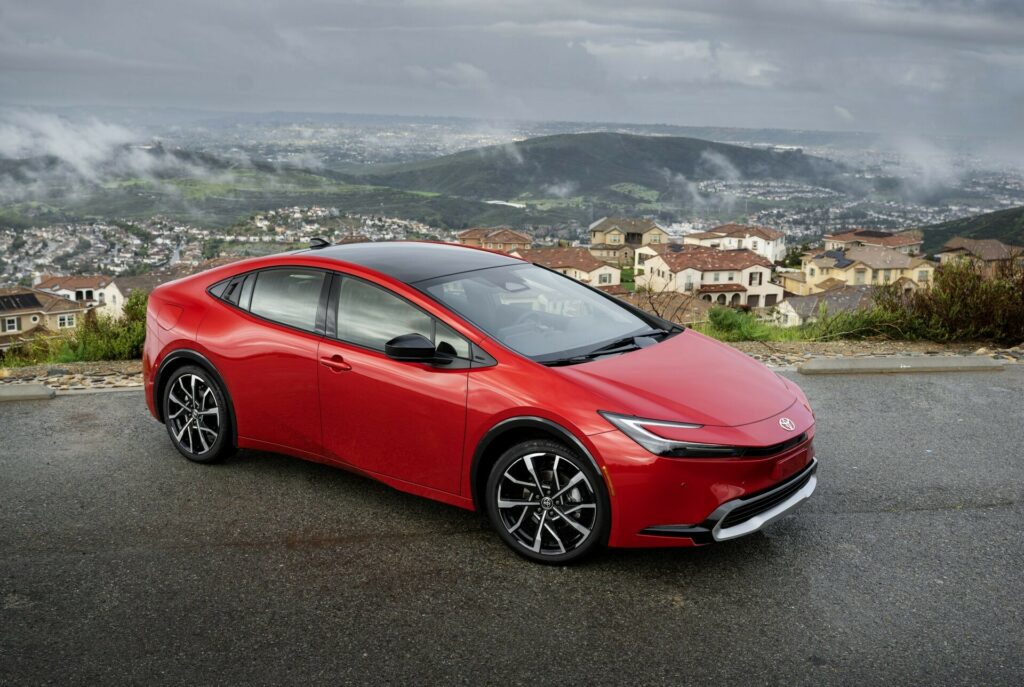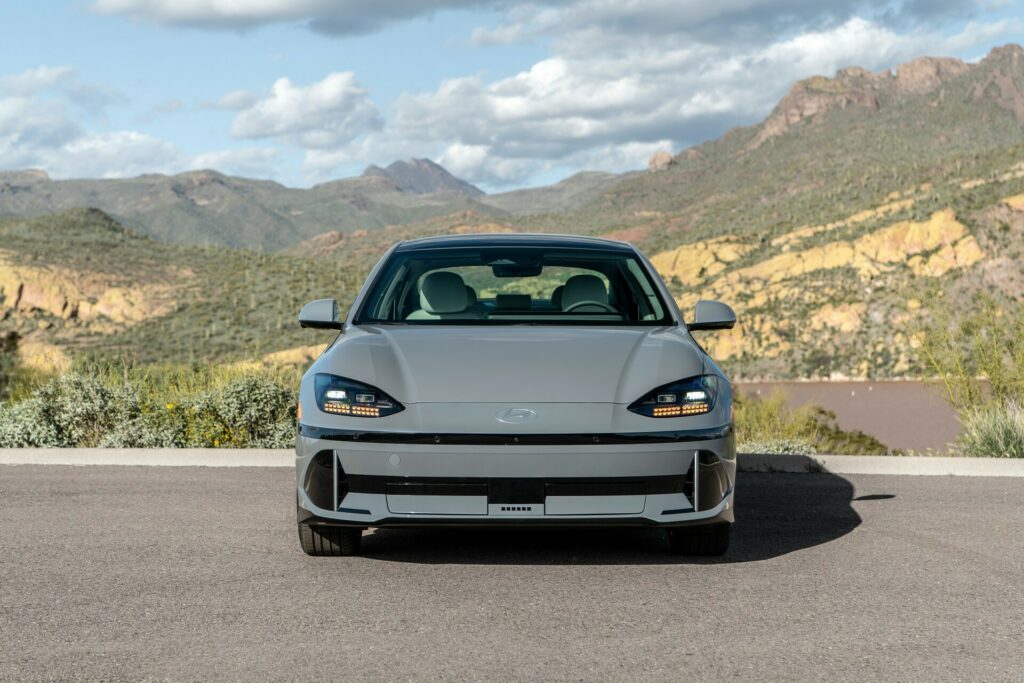The Canadian government is promising a gradual and orderly switch to electrified vehicles

Canada has officially introduced the Electric Vehicle Availability Standard, which calls on automakers to meet annual zero-emission vehicle (ZEV) sales targets.
The targets will go into effect for the 2026 model year and require 20 percent of new light-duty vehicles – including passenger cars, light trucks, and SUVs – be ZEVs. That number will increase annually and reach 100 percent in 2035.
That’s ambitious to say the least, but the government contends this will put them on the path to largely eliminating light-duty vehicle emissions by 2050. The government also claimed this will be a “gradual and orderly switch,” which “ensures a growing supply of zero-emission vehicles for Canadians.”
advertisement scroll to continue
More: EV Consideration Drops 13% In Canada As Consumers Balk At Limited Range And High Prices

That being said, it’s not the end of the ICE age as plug-in hybrids will be considered ZEVs alongside EVs and FCVs. The government went on to say there are already more than 50 ZEVs available in Canada and 41 more are expected in 2024.
The Canadian government said the rules echo those found in California and will provide automakers with a “ramp-up period of more than a decade.” Officials went on to note gas- and diesel-powered vehicles can still be driven after 2035, and can be bought or sold used.
Ottawa said the move will benefit citizens as there will be positive health impacts as well as significant savings. In particular, the Canadian Automobile Association estimates the average EV owner saves 40-50 percent in maintenance costs. The group also estimates the average Canadian spends close to $3,000 CAD ($2,250 USD) annually on gas, whereas the annual cost of powering an electric vehicle is only a few hundred dollars. The government went on to say “Canadians will save about $36.7 billion CAD ($27.5 billion USD) in energy costs between now and 2050 as a result of the regulations.”

For Canadians living in cold remote areas, the government’s message was effectively ‘deal with it.’ In particular, they noted ZEVs are popular in Norway and plug-in hybrids are a good alternative to electric vehicles.
To get ahead of fears about the electrical grid being overtaxed, the government said they’re “confident” it will be able to “support the large increase in electric vehicles.” That being said, ZEVs are projected to account for about five percent of total electricity demand in Canada in 2035 and 9.5 percent in 2050. It also goes without saying, if that energy isn’t generated in a ‘green’ manner, ZEVs won’t be eco-friendly.
As expected, the government announced a credit system to provide flexibility to automakers. Companies can earn credits by establishing new DC fast charging stations that have 150+ kW chargers and are open to any ZEV with a compatible charging port – including rivals. These stations have to be operational for at least five years and be opened between January 1, 2024 and December 31, 2027.
Things get more complicated from there as EVs, FCVs, and plug-in hybrids with an electric range of 50 miles (80 km) or more will generate one credit in all years. Plug-in hybrids with less range get partial credit, which varies depending on the year, range, and seating capacity.
That’s just a brief overview of the rules, but the government contends the ZEV mandate will pave the way for “clean air, good jobs, and a strong economy.”
Automakers haven’t said much at this point, but Hyundai Canada released a statement saying they support the objectives outlined by the government. However, they believe the “success of the program is dependent on enhanced efforts to address two essential areas required for consumer adoption: charging infrastructure and ZEV affordability.”



